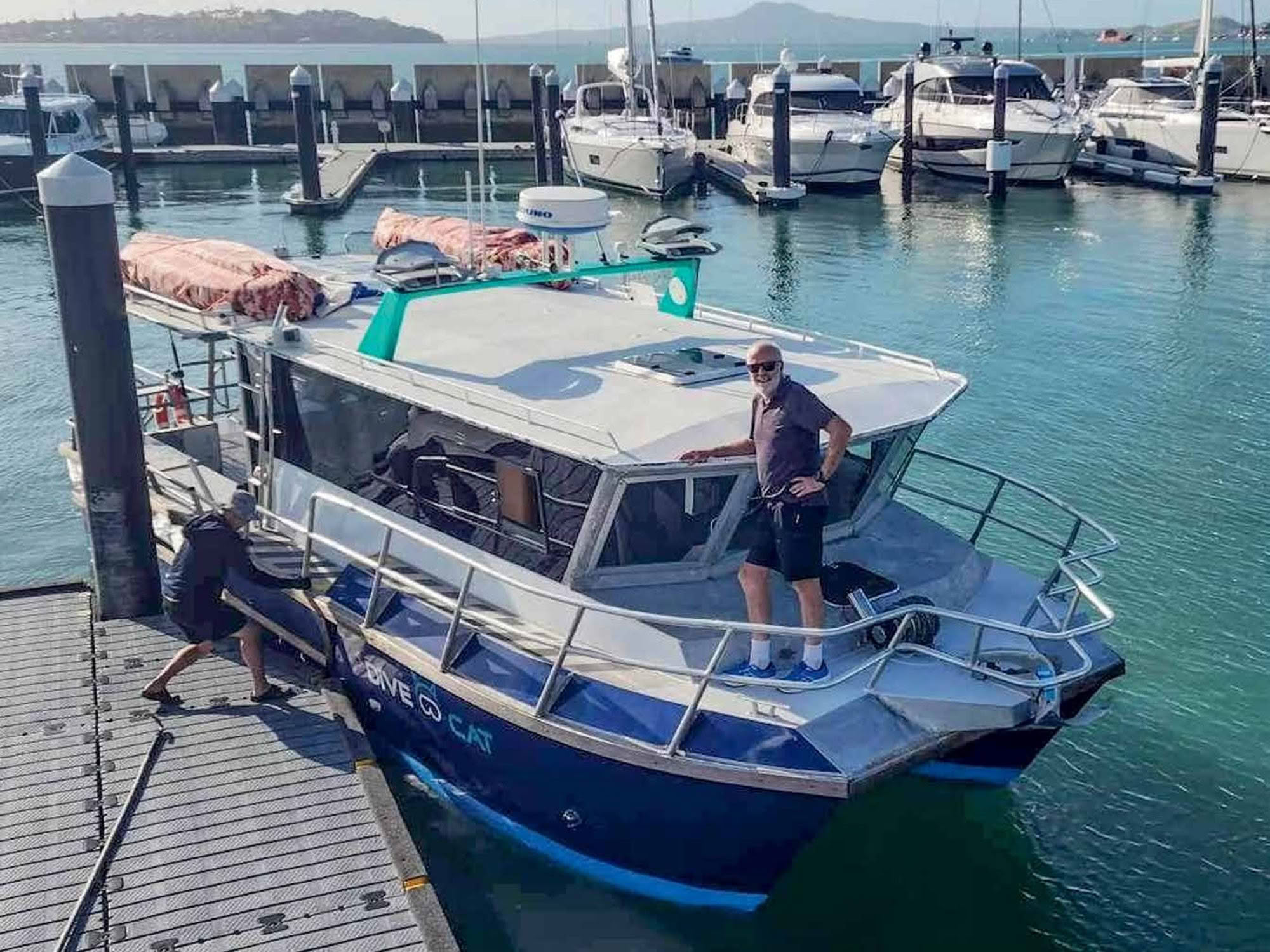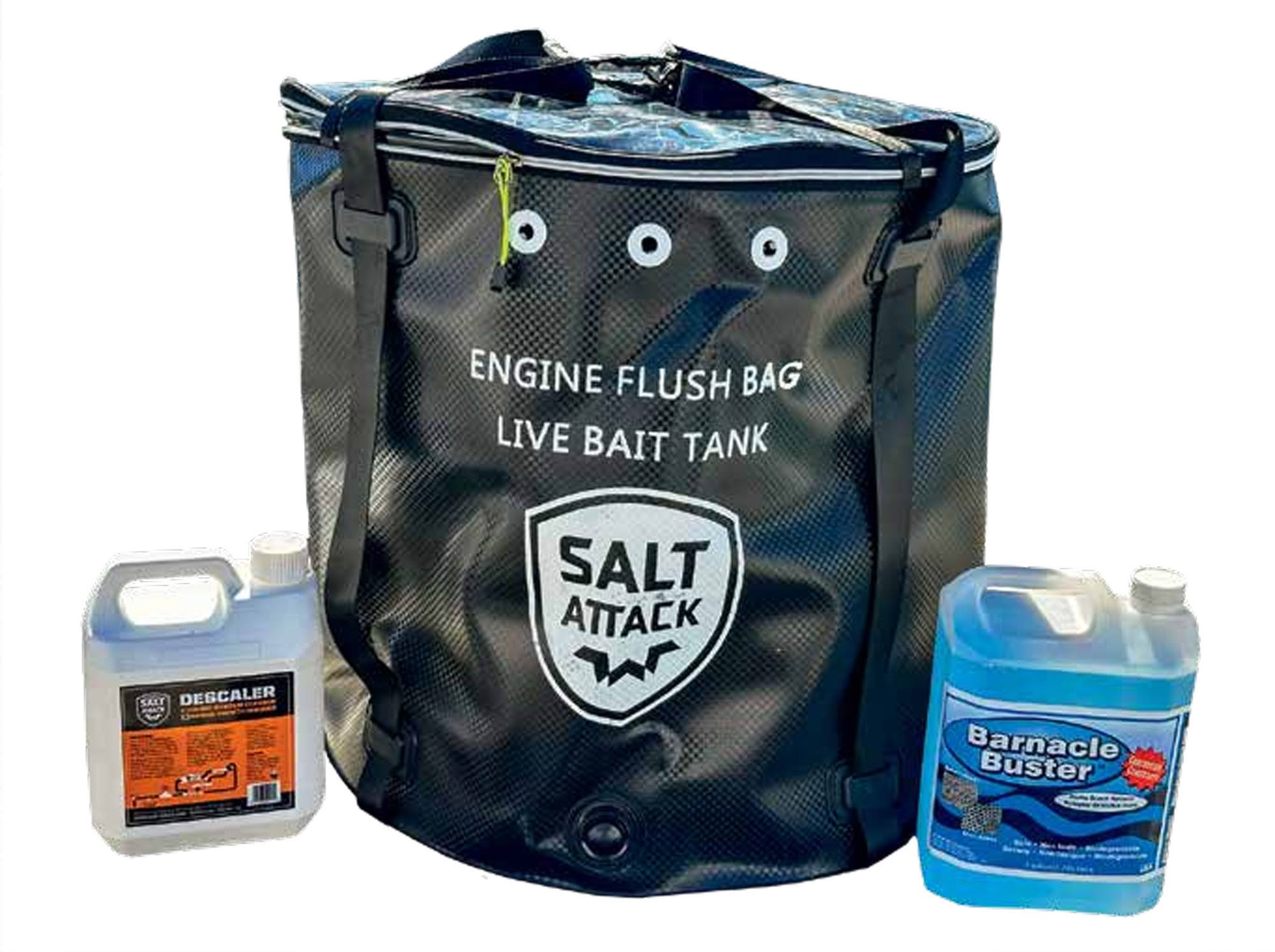

“Those who say it cannot be done should not interrupt those who are busy doing it” – George Bernard Shaw
On Waitangi day February 6, 2020 my boat DiveCat sank while on the way home from a dive trip out to Great Barrier Island. The details of that event have been documented in this magazine, as has my search for her and eventual salvaging of the wreck on Easter Saturday 2022. This was followed by nearly two years of hard work, cleaning the hull back to bare metal and then the slow process of rebuilding her section by section. Readers of this magazine will have seen the many challenges that I faced during that rebuild, not to mention the disastrous effect this has had on my bank balance.
But the project all came to fruition February 8, 2024 when DiveCat was put back into the water, some four years and two days after that fateful day when she sank below the surface. It would have been symbolic to actually re-float her on Waitangi Day, but the people necessary to achieve this were obviously not keen to work on a public holiday. So it was a few days later that the truck from Boat Haulage arrived at the storage yard in Panmure to lift my ‘mistress’ from her dry and dusty home.

The rebuild is not quite complete – I have a long snag-list of tasks to finish up, such as the upholstery, installing cupboards and finishing the trim. None of these are functionally significant and won’t prevent her from being used in the meantime. And since it was costing me over $1,000 for every month she remained in the yard, it was time for her to get wet again.
The process of lifting an eight-tonne boat is remarkably efficient, thanks to the hydraulic lifting mechanism built into the specialised haulage truck. After a fair bit of tight manoeuvring to get the long trailer slid in under the twin hulls and past the supporting blocks she has been sitting on, Luke Pirie of Boat Haulage activated the hydraulic rams and lifted her up smoothly. We then lashed the boat firmly to the trailer, before starting the careful road trip back to Half Moon Bay Marina.
In preparation for the move I had already taken off the radar dome and lowered the aerials, so even up on the trailer she was comfortably under the legal maximum height of 4.8m above the ground. The route she was travelling along had no low-hanging cables to deal with, so the 10km drive was achieved in about 45 minutes.
While he drove her slowly, I scooted ahead to the marina where the travel lift was waiting. After sorting out the last of the paperwork with the marina office, and sourcing the necessary cups of coffee, we waited for the truck. When she arrived, we received a fair bit of attention from the haul-out crew who had seen her when she was first brought up off the bottom.
After the travelift picked her up off the truck I had another surprise – she has lost nearly a tonne of weight from her original displacement. The weight savings were achieved by my use of acrylic windows instead of heavy glass, the replacement of several very substantial hatches and doors as well as the entire toilet compartment, and the use of lightweight fibreglass panels for lining the cabin instead of thick timber joinery. The lower weight will translate to better performance and lower fuel consumption, although it does mean my waterline level for the antifoul is now sitting a bit high.



Prior to putting her back in the water, but once the bulk of the rebuild work was complete, I faced the thorny question of insurance. Given her history the hull will always be in danger of continuing corrosion in the hidden corners and voids of the hull. Would anyone even be prepared to provide cover against a future sinking event? There are actually two different components to the insurance required: a) covering the potential liability for damage caused to other parties, and b) covering the vessel itself against loss or damage.
The first part is arguably the most important, since the marina will not accept a vessel without liability insurance. This is in case the boat (or skipper) causes damage to other vessels or to the facilities. The amounts at risk can be pretty high and most marinas require at least five million dollars in liability cover. The second component is the owner’s personal risk of financial loss and is usually capped at the market value of the boat, although sometimes a higher replacement value can be negotiated.
In the case of DiveCat the liability component was no greater than for any similar-sized boat, and indeed I had managed to organise liability cover even when we had just salvaged and lifted her out the water as a wreck. But the insurance for the vessel itself had obvious challenges. The first step was to get a ‘condition report’ prepared by an approved marine surveyor. I was charged $100 plus GST per metre of boat length, so another body-blow to the already weakened wallet.
The report came back with everything marked as either ‘Good’ or ‘Serviceable’, but it did note several areas that would require monitoring and possible future remediation. Nothing I did not know already – I would be undertaking regular inspections and maintenance in corners of the hull that most boat owners typically don’t care about.
The surveyor did also point out one spot that I had overlooked, so a last-minute clean and repair was required to remediate that area. And he also pointed out that for the next few years she will most likely be unsaleable, until the long-term impacts of any missed areas of corrosion either become visible or are shown to not be an issue. Since I have rebuilt her purely to use as my own boat the next decade or more, this is not a concern to me, but it does mean that the insured value is well below what she would cost to replace.


The next hiccup was that my original insurer did not want to take on the risk, due to my previous total-loss claim. While this was not entirely surprising, they are the largest providers in New Zealand and with recent market rationalisation there are not a lot of specialist marine insurers left. Luckily, I work with a good broker and he was able to go to the UK market to arrange cover with one of the international companies. Because of the delay caused by times zones, we immediately put some third-party cover in place to cover the move and initial re-floating. As it turned out, I got confirmation that I had comprehensive cover less than an hour or so before we lifted her.
Actually dropping DiveCat back into the water was uneventful thanks to the highly experienced crew at Half Moon Bay Marina. Once she was floating again I spent a busy few minutes checking every single hull compartment and testing all the through-hull fittings to make sure there were no leaks. Nothing – she was completely dry! Next step was to start the motors and check them out, including leaving them running for about 10 minutes. This was to make sure there were no problems that might cause them to cut out as we tried to get back to the berth.
After some 45 minutes of checking over everything, my stress levels had dropped somewhat and I was comfortable that we could now safely motor our way around to the berth. We set out the boat hooks and fenders in case they were needed, and puttered around to our berth at idle speed. While underway I discovered one small drama – the port and starboard throttle controls were configured the wrong way around. Rather than shut down and try to correct this in mid-stream, I simply drove cautiously using the reversed controls.


Once safely in the marina berth, a bit of time was needed to adjust the mooring ropes, to get her properly centred and secured in her berth. I then climbed onto the roof and re-fitted the radar dome, extended the aerials and fixed the anchor light. Finally, about four hours after the truck first arrived at the storage yard, I could relax: DiveCat was a boat again, and I can look forward to many adventures with her in the future.
The final stage of the relaunch was wrapped up two days later, when I reassembled the crew that were involved in the salvage effort. We re-created the iconic photo that we took on her deck on the morning after we had raised her. This time we were all a bit cleaner and less tired, and the photo could include Jordan who was not with us that final morning but had participated in nearly every one of the nearly 40 dives I made down to her. Time for some serious boating again! BNZ



